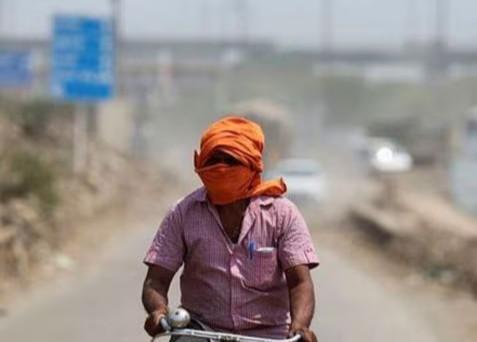
Extreme Heat Endangering Health & Productivity of Workers: Report
As the world continues to grapple with the challenges of climate change, a recent report by the World Health Organisation (WHO) and the World Meteorological Organisation (WMO) has sounded a stern warning about the devastating impact of extreme heat on workers’ health and productivity. The report, which has sparked widespread concern, reveals that worker productivity drops by 2-3% for every degree above 20°C, leading to significant losses in both human health and economic growth.
The report, which was published in the journal The Lancet, highlights the alarming rise in heat-related illnesses and fatalities, particularly among manual workers in agriculture, construction, and other sectors that are often exposed to extreme heat. This is especially concerning for vulnerable populations such as children and the elderly, who are more susceptible to heat-related health risks.
Heat-Related Health Risks
The report identifies several heat-related health risks that workers are facing, including:
- Heatstroke: A life-threatening condition that occurs when the body’s temperature exceeds 40.6°C (105°F). Symptoms include headaches, dizziness, nausea, and loss of consciousness.
- Dehydration: A condition that occurs when the body loses more water than it takes in, leading to symptoms such as thirst, dry mouth, and dark-colored urine.
- Kidney Dysfunction: Prolonged exposure to extreme heat can lead to kidney damage and even failure.
Vulnerable Populations
The report emphasizes the need to protect vulnerable populations, including:
- Children: Children are more susceptible to heat-related illnesses due to their smaller body size and limited ability to regulate their body temperature.
- Elderly: Older adults are more prone to heat-related illnesses due to decreased sweating, reduced thirst sensation, and increased risk of chronic medical conditions.
- Manual Workers: Workers engaged in manual labor, such as agriculture, construction, and manufacturing, are more likely to be exposed to extreme heat and are at higher risk of heat-related illnesses.
Economic Impact
The report also highlights the significant economic impact of extreme heat on workers and employers. According to the report, the economic losses due to heat-related illnesses and fatalities are substantial, with estimates suggesting that heat-related illnesses cost the global economy around $2.5 billion annually.
Recommendations
To mitigate the risks associated with extreme heat, the report recommends several measures, including:
- Heat Stress Prevention: Employers should take measures to prevent heat stress, including providing regular breaks, ensuring adequate hydration, and implementing heat stress prevention programs.
- Heat Wave Early Warning Systems: Governments and employers should establish heat wave early warning systems to alert workers of impending heat waves and provide guidance on heat stress prevention.
- Heat-Resistant Work Schedules: Employers should consider implementing heat-resistant work schedules, such as adjusting work hours to avoid peak heat periods.
- Heat-Related Health Monitoring: Employers should monitor workers’ health and provide medical attention to those who are exhibiting signs of heat-related illnesses.
Conclusion
In conclusion, the report by the WHO and WMO highlights the urgent need to address the growing threat of extreme heat on workers’ health and productivity. As the world continues to grapple with the challenges of climate change, it is essential that we take immediate action to protect vulnerable populations and prevent heat-related illnesses and fatalities. By implementing heat stress prevention measures, heat wave early warning systems, heat-resistant work schedules, and heat-related health monitoring, we can mitigate the risks associated with extreme heat and ensure a healthier and more productive workforce.
Source:
https://repository.inshorts.com/articles/en/PTI/45d9bd2d-ff57-417c-9e5f-831344bb34b0






